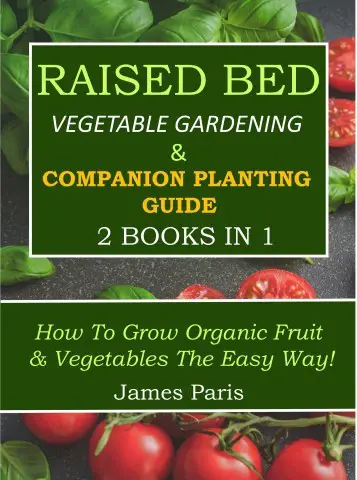There are many reasons why you should build a raised bed garden. Particularly if you are growing vegetables.
But if you are planning on building a taller raised bed so that you have ease of access or maintenance.
Perhaps to work from a wheelchair – You may have an expensive problem on your hands!
Without a doubt, to fill a raised bed cheaply you have to provide your own materials! Home-made compost, topsoil, forest debris and old bricks can all be used. Particularly to fill in a deep raised bed garden at little cost.
at little cost.
How do you fill in a deep raised bed without ‘breaking the bank’. Even with the advantages a Raised Bed Garden has to offer, compost is fairly expensive. Filling a raised bed with store-bought compost/soil mix could cost a small fortune.
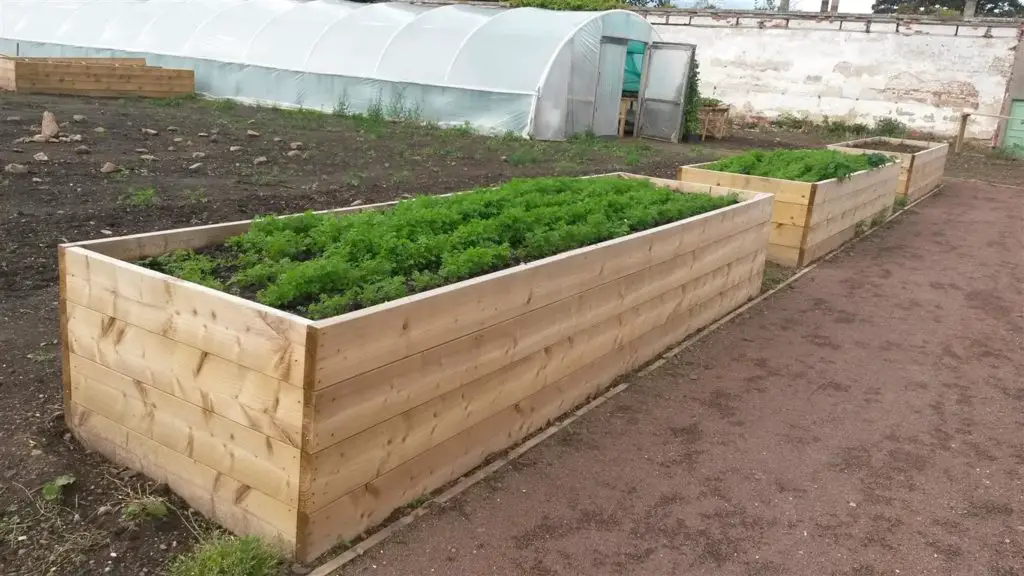
This is a list of volumes you would need for raised beds of various sizes. This includes the base build-up material.
9 foot by 3 foot by 30 inches high……67.5 ft3
9 foot by 3 foot by 24 inches high……54 ft3
9 foot by 3 foot by 18 inches high……40.5 ft3
9 foot by 3 foot by 12 inches high……27 ft3
For a 9 x 3 bed every six inches high the volume would be equal to an extra 13.5 cubic foot of material.
6 foot by 3 foot by 30 inches high……45 ft3
6 foot by 3 foot by 24 inches high……36 ft3
6 foot by 3 foot by 18 inches high……27 ft3
6 foot by 3 foot by 12 inches high……18 ft3
For a 6 x 3 bed every six inches high the volume would be equal to an extra 9 cubic foot of material.
Cheap ways to fill a deep raised bed would be
- Fill the bottom half with broken branches, twigs and general forest waste. Add green material like grass clippings, weeds (without roots or seeds). comfrey cuttings, kitchen vegetable waste. Top up with 6 inches of topsoil and home-made compost mix
- In deep beds, lay straw bales on their sides to lift the bed 14 inches or so from the bottom. Add green material as above until six inches from top then fill with topsoil/compost mix
- Fill the bottom half with cardboard and old newspapers (no glossy stuff) then follow instructions for 1 & 2
- For a deep bed, but growing surface veg like cabbages. tomatoes, lettuce, kohlrabi, peppers for example . Then you can fill the bed with rubble and leave six inches for the compost mix.
- If you plan to grow deep root veggies then you need the full depth of the raised bed for the roots to develop. A great way to fill this would be to pile in all the old compost material you have. Even if it is not fully composted – right up to around 9 inches or so from the top. Finish off with a good compost/soil/sand mix for tap-root vegetables.
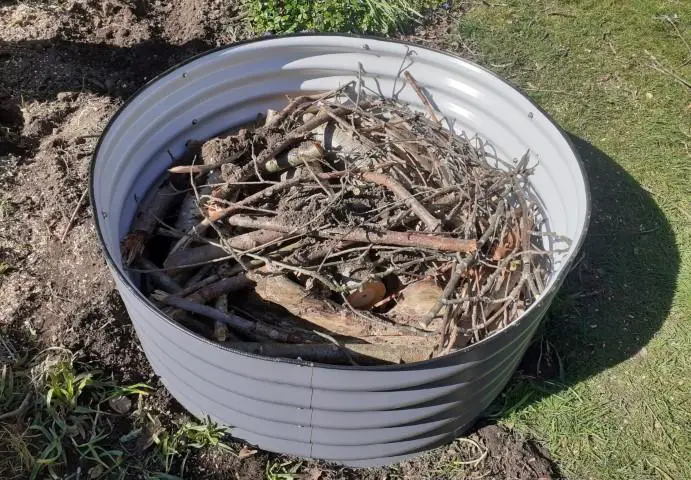
The least preferable way to fill a deep raised bed in my opinion, is option 4. Rubble such as old stones or bricks do make good drainage that is true. And they do take up a lot of space – which is the main goal. However depending on the source, the mortar can be very detrimental to root growth.
in my opinion, is option 4. Rubble such as old stones or bricks do make good drainage that is true. And they do take up a lot of space – which is the main goal. However depending on the source, the mortar can be very detrimental to root growth.
If you fore-go the rubble and use the straw bales , old timber, or cardboard/straw mix. Then you have a good advantage over the rubble method. The straw bales
, old timber, or cardboard/straw mix. Then you have a good advantage over the rubble method. The straw bales , sticks and cardboard will eventually compost down. These add their own nutrients to the bed after 3 or 4 years.
, sticks and cardboard will eventually compost down. These add their own nutrients to the bed after 3 or 4 years.
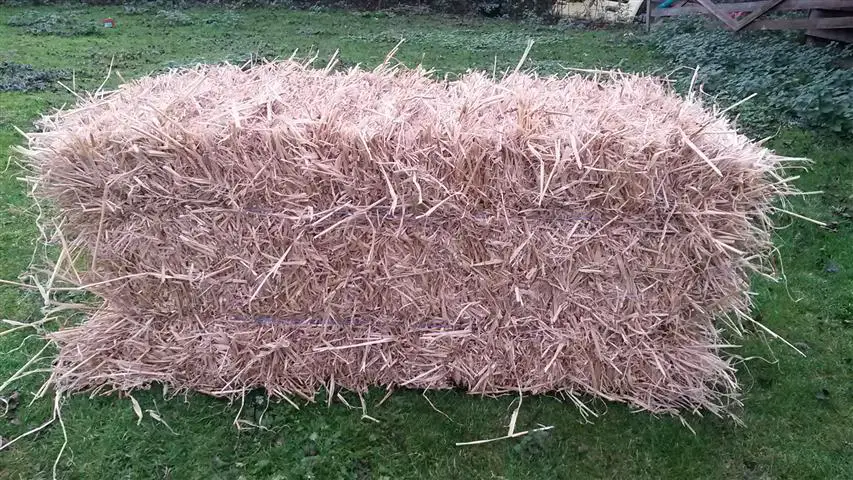
End result. You have a nutrient-rich soil, working much like a Hugelkultur or Lasagna garden. B
or Lasagna garden. B oth of which are excellent vegetable growing methods in their own right.
oth of which are excellent vegetable growing methods in their own right.
Basically it is cheaper if you are only growing ‘surface’ vegetables as listed above. because you do not need the volumes of infill required for deep beds.
If you have a handy source of the other materials. for example broken branches, old lumber or forest debris. Then even filling a deep bed presents no real problems with cost.
Studies show that most vegetables grow in only the first few inches of top soil – from 4 to 6 inches. Meaning there is no need to fill in your deep raised bed with expensive compost/soil material. Unless you are planting deep root parsnips or potatoes
that most vegetables grow in only the first few inches of top soil – from 4 to 6 inches. Meaning there is no need to fill in your deep raised bed with expensive compost/soil material. Unless you are planting deep root parsnips or potatoes for example.
for example.
Yet another way to fill a deep bed is to use horse manure if you have a handy source for it.
Keep in mind that if you use fresh manure then you will in effect be making a Hot Bed garden. This will heat up for the first 4-6 weeks before cooling down as the decomposing process slows.
This will heat up for the first 4-6 weeks before cooling down as the decomposing process slows.
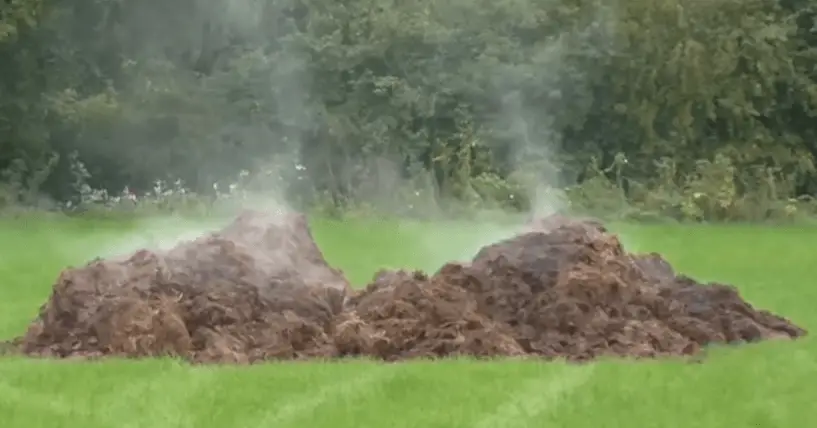
This method of gardening means that you can extend the growing period by up to two months. Well-rotted horse manure is perfect to lay under the 6 inches of topsoil mix in any raised bed. And is particularly good for leek plants which love well-rotted manure.
So there you have it – many ways to fill in a deep raised bed garden without ‘breaking the bank’!
without ‘breaking the bank’!
FAQ’s About Raised Bed Gardening
- Question: Do I need to remove weeds at the bottom of raised beds?
- Answer: : For deeper raised garden beds at 18 inches (45cm), removing weeds is not necessary. Only the most persistent weeds or grasses will grow through that depth of soil. For shallower beds at only 6 inches (15cm) or so, I would advise putting down a weed fabric.
- Question: How does peat moss benefit the soil?
- Answer: Peat moss is sometimes used to bulk up the soil mix and add ‘friability’ or looseness to the mix. This creates ideal conditions that will encourage plant root growth and improved harvests.
- Question: What is the difference between garden soil and raised bed soil?
- Answer: The main difference with raised bed soil is its ability to keep moisture and nutrients. With garden soil you are (more or less) restricted to what you have available in the garden.
The last word:
I hope that I have given you a few ideas not only on how best to fill a raised bed cheaply. But also on the benefits that raised gardens have over traditional gardening methods.
Personally I have found that while it may be a big effort at the start. Raised Beds are definately the way forward. This especially as I get a little older and getting up from a kneeling position is no fun anymore!
Raised beds have taken the effort away from the old intensive gardening methods of the past.
Now, it’s time to get back to the garden, and filling that raised bed!

